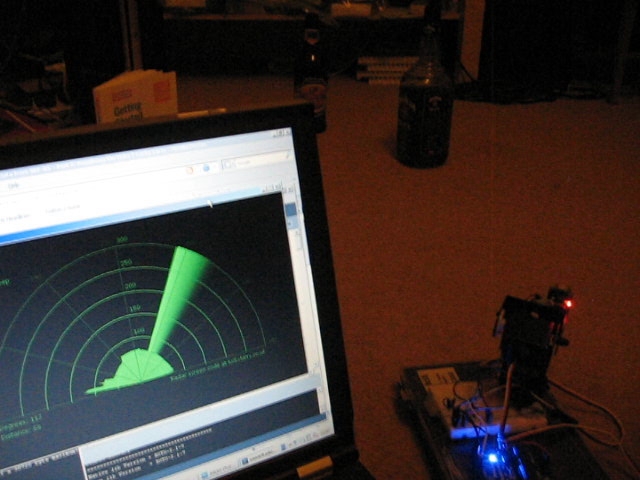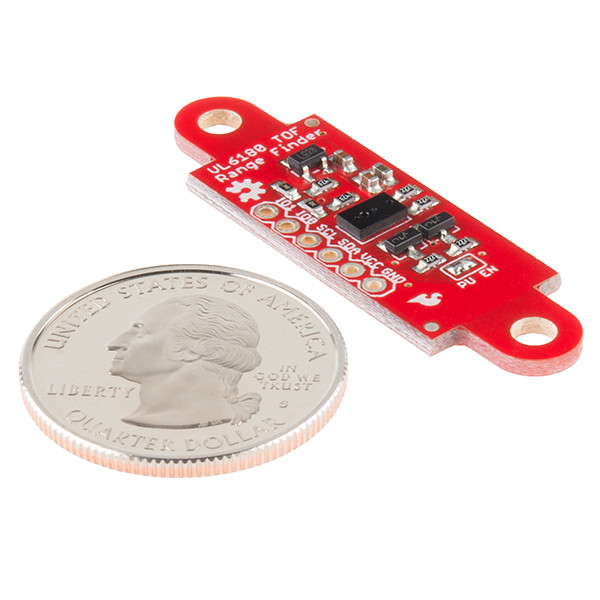Difference Between Radar and ToF Sensor
Analyzing 2D images is very useful in a wide range of machine vision applications such as medical diagnostics, driverless vehicle testing, bar code reading, and so on. However, many a times you need to create a 3D image of an object for applications such as logistics, robotics, and autonomous vehicles. Fortunately, many different imaging technologies are in widespread use and are capable of providing 3D information for many machine vision applications. ToF is a popular scanner-less imaging technique that uses high power optical pulses to capture depth information. We take a look at how ToF technology compares with the Radar technology.

What is Radar Sensor?
Radio detection and ranging, or simply called Radar, is an active sensing and detection system that uses radio waves to locate targets, their angle and velocity at relatively longer distances. This is similar to a phenomenon as you yell while standing at a cliff and you hear your own voice bouncing back. This is because as the sound waves produced by your voice reach the surface of the rock, they come back bouncing back, which is an echo. So, when you substitute radio waves for sound waves, this is exactly how a radar works. Radar is based on the fact that radio waves, like sound waves and light waves, reflect back from solid surfaces.
A French cruise liner was the first ship to be fitted with an obstacle-detection radio system in the 1930s. One popular application of radar technology is realized in radar imaging system that is used to create 2D images, typically to capture landscapes. It uses an antenna and a digital computer, instead of a camera lens and film, to capture images of targets, making it easy to distinguish one type of target from other, such as a bird from an aircraft, or a commercial airliner from a fighter jet.

What is ToF Sensor?
A time-of-flight (ToF) camera is a range imaging camera technology that uses infrared light to determine depth information of real environments in real time. ToF is a fast, effective and easy to install technique for people and object detection and their accurate positions and movement in 3D. ToF is a scanner-less imaging technology that measures the phase delay of the reflected infrared light. It is based on the same phenomena as you shout inside a large cave and you hear an echo of your voice in return. The main components of a ToF camera are a lens, an integrated light source, sensor, and an interface. The sensor stores all the information of the captured image.
The ToF camera system is able to capture both depth information and intensity information at once for every pixel in the image. The first technology to realize the application of scanner-less range camera based on ToF principle is modulated image intensifier that offers both high resolution and sub-mm precision at video rates. However, the higher cost of this technology does not allow this technique to be used in consumer applications. The ToF technology, in general, is adopted in key application areas, such as consumer electronics, automotive, healthcare, security and surveillance, robotics, and so on.
Difference between Radar and ToF Sensor
Technology
– While the purpose of both Radar and ToF is the same – to detect the presence and volume of distant objects – the difference lies in the technology they employ in their applications. Radar, short for Radio Detection and Imaging, is a remote sensing and detection technology that used radio waves to locate targets, their angle and velocity at relatively longer distances. Time-of-flight (ToF), on the other hand, is a range imaging camera technology that uses infrared light to determine depth information of real environments in real time.
Principle
– The main components of any functional radar include an antenna, transmitter, receiver, and a display unit. The fundamental principle on which radar works is similar to that of the echo principle. The radar antenna emits pulses of microwave radiation and measures the time of flight of the reflected signal. Radar is based on the fact that radio waves, like sound waves and light waves, do reflect back from solid surfaces. ToF, on the other hand, is based on the principle of pulsed light sources and measure the time it takes for a light pulse to travel from the emitter to the scene and then back after it gets reflected.
Radar vs. ToF: Comparison Chart

Summary
While both Radar and ToF are both based on the echo measurement phenomena as you yell while standing at a cliff and you hear your own voice bouncing back, the difference lies in the underlying principle and how they work. Radar uses radio waves to locate targets, whereas a ToF sensor uses infrared light to find out depth information similar to how bats are able to navigate and detect their surrounding using echolocation. They emit sound waves at frequencies which are inaudible to the human ears, called ultrasound. They bounce back when hit by an obstacle or an object.
- Difference Between Caucus and Primary - June 18, 2024
- Difference Between PPO and POS - May 30, 2024
- Difference Between RFID and NFC - May 28, 2024
Search DifferenceBetween.net :
Leave a Response
References :
[0]Hansard, Miles, et al. Time-of-Flight Cameras: Principles, Methods and Applications. Berlin, Germany: Springer Science & Business Media, 2012. Print
[1]Remondino, Fabio and David Stoppa. ToF Range-Imaging Cameras. Berlin, Germany: Springer Science & Business Media, 2009. Print
[2]Kolawole, Michael. Radar Systems, Peak Detection and Tracking. Amsterdam, Netherlands: Elsevier, 2003. Print
[3]Richards, John A. Remote Sensing with Imaging Radar. Berlin, Germany: Springer Science & Business Media, 2009. Print
[4]Zanuttigh, Pietro, et al. Time-of-Flight and Structured Light Depth Cameras: Technology and Applications. Berlin, Germany: Springer, 2016. Print
[5]Image credit: https://live.staticflickr.com/7343/16381343721_d055966bc9_z.jpg
[6]Image credit: https://live.staticflickr.com/2521/4106571163_6abc138077_z.jpg
